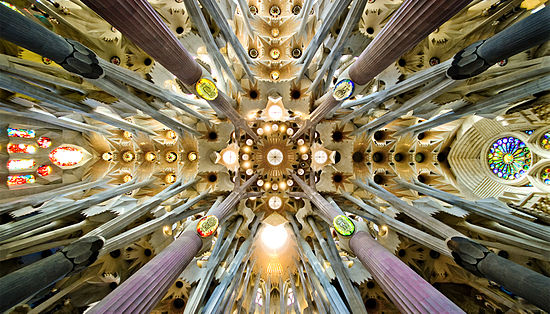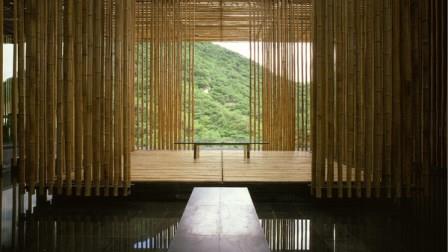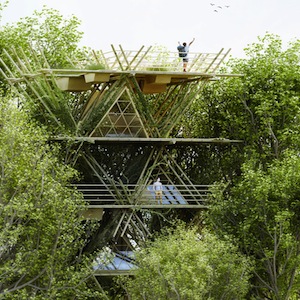During a recent visit to northern NSW I stayed at Bonza Bamboo and had the opportunity to cut some bamboo, and the time to treat it. There was also the opportunity to call in to Byron Bamboo, in nearby Tyagarah.
While Lance and Carolyn were away exhibiting at Strand Ephemera 2015, I was holding the fort at Bonza Bamboo and cutting and treating some of their bamboo to take away with me. Some poles were left standing with the solution inside for 3 weeks. For others, I availed myself to Lance’s simple and efficient PVC storm water pipe method. This is ideally suited for bamboo splits and very small diameter poles.

45 degree stormwater junction at one end
PVC storm water pipe of varying lengths, as seen in the photos, are fitted at one end with a 45 degree junction. Both ends are capped with a screw fitting. The lower part of the junction facilitates the loading of the bamboo. Once the bamboo is loaded the cap is screwed on. The upper facing part of the junction is where the preservation solution is poured in. The other end of the storm has an inline tap fitted into an end cap. In Lance’s system, this drains to a large drum that sits at a level below the PVC pipes to use gravity to empty the pipes after the treatment is complete.

… inline tap at the other end
All the parts to make this treatment system are readily available at your local hardware or plumbing suppliers.
Once treatment was underway I was keen to visit Byron Bamboo to follow up on the experiments they were undertaking with Freemite after the workshop in January this year. The product showed such promise as an effective and natural method to treat bamboo. Kaye is still awaiting test results for Freemite from UTS, but she did have some comments after trying the product. There were some major concerns:
- The cost: It is an expensive product and, once diluted for use, is only effective for a month.
- It’s very strong chilli content makes it dangerous to skin and eyes. It has a real burning effect, so from a WHS point of view here in oz it wouldn’t be deemed safe.
Ultimately, she has returned to using soluble boron, Dissolvabor, like Lance.





 Simple searches on the Boucherie method commonly turn up treatment methods calling for an air compressor. But we don’t all have air compressors in our sheds. Also, after spending a day along side the innovative Lance of
Simple searches on the Boucherie method commonly turn up treatment methods calling for an air compressor. But we don’t all have air compressors in our sheds. Also, after spending a day along side the innovative Lance of  Secondly, construct a manifold that has a garden hose fitting at one end and cuff that slides over the bamboo at the other end. The manifold needs to have a small release value (like a bicycle valve) incorporated in the design to release pressure . (Alternatively, you can probably buy a customisable manifold from Lance for about a hundred bucks. Contact Bonza Bamboo
Secondly, construct a manifold that has a garden hose fitting at one end and cuff that slides over the bamboo at the other end. The manifold needs to have a small release value (like a bicycle valve) incorporated in the design to release pressure . (Alternatively, you can probably buy a customisable manifold from Lance for about a hundred bucks. Contact Bonza Bamboo  Thirdly, set up a drum, with a garden hose attached to it, at height. The drum will hold your chosen preservation fluid. The height will dictate the pressure you can achieve, and thus the time it takes to displace the sap. Janssen, in his book Building with Bamboo: a handbook, suggests that a head height of 4-6 metres is adequate to get the preservation liquid flowing. Lance got about 6 ½ psi at a head height of about 5.5 metres. (This happens to be the reachable height from a ladder in the loft of his shed).
Thirdly, set up a drum, with a garden hose attached to it, at height. The drum will hold your chosen preservation fluid. The height will dictate the pressure you can achieve, and thus the time it takes to displace the sap. Janssen, in his book Building with Bamboo: a handbook, suggests that a head height of 4-6 metres is adequate to get the preservation liquid flowing. Lance got about 6 ½ psi at a head height of about 5.5 metres. (This happens to be the reachable height from a ladder in the loft of his shed).



















